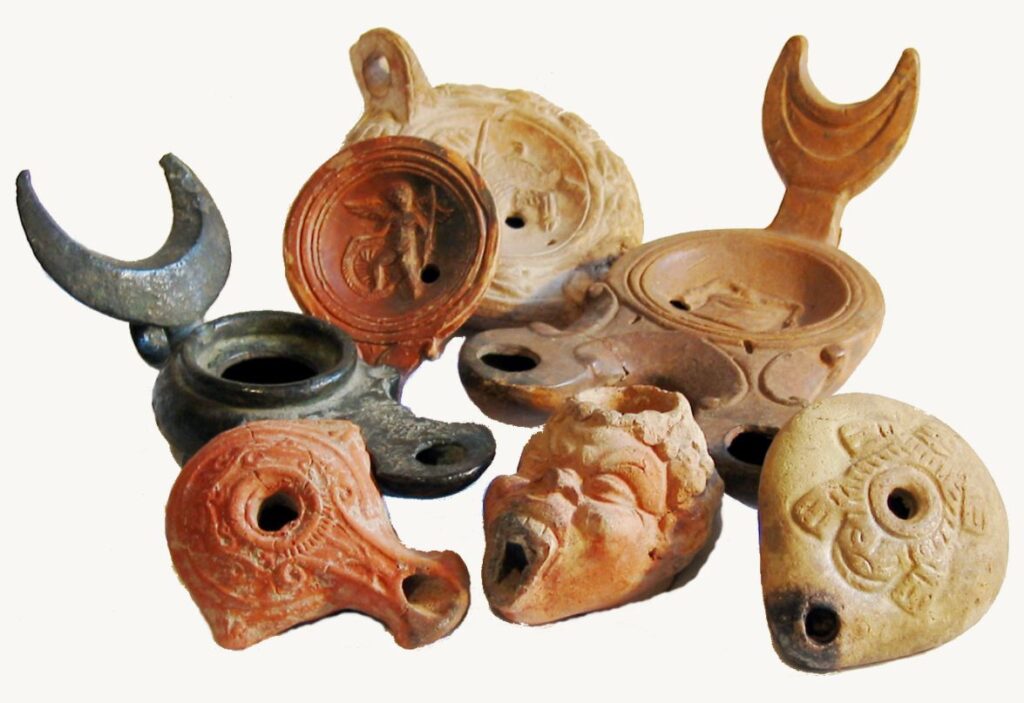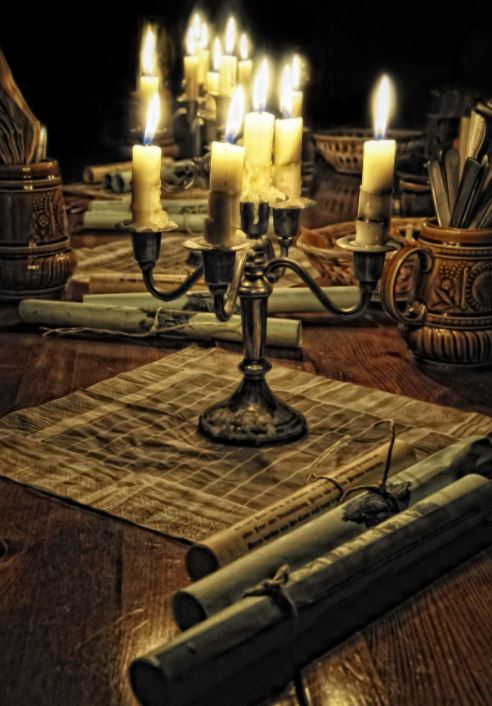
Candles as we know them are not an ancient invention. While fires and oil lamps have been used for millennia to dispel the dark, it may have been only more recently that candles came to light. There are historians that assume that candles have been around for thousands of years, but as people would have been literally destroying the evidence as they used candles, it’s a bit trickier than you might think to pinpoint when, exactly, the candle’s flame first sparked.

Ancient Days Before Candles
Scholars think that the Egyptians used lighting similar to candles. There is, however, no physical proof that they did. We know that Egyptians mostly used torches dipped in different types of waxes to provide light but slow down the speed at which the torches burned themselves out, but they did not appear to use anything that resembled candlewicks of any type or material. Ancient Greeks probably had similar candle-like tools, as well, although there is no physical record of them.
The Invention of the Candle
The Romans are normally credited with the invention of the first dipped, wicked candle. They are also the first ones to mention candles in writing. Their candles were developed by repeatedly dipping cloth, papyrus, or twine in some sort of slow-burning wax. The dipping method has been used for centuries and is still popular today.

Candles are…Delicious?
The Romans, however, did not find their candles very practical, and they believed them an inferior substitute to their elaborate and artistic oil lamps. Candles did serve a purpose when traveling, and legionnaires often carried them around, as they were light and easy to pack. This portable light source was often molded out of animal and vegetable fats, making them edible in a pinch. There are numerous accounts of starving Roman soldiers eating their candles to calm their hunger, a practice that was also recorded centuries later by British lighthouse keepers, who were often isolated for months without a way to obtain new food supplies.
The Demise of Olive Oil and the Rise of Candles
With the fall of the Roman Empire, safe trade routes quickly disappeared, and olive oil, which was used to fuel lamps, became a very rare commodity outside of the Mediterranean. As a consequence, people in the Middle Ages again resorted to animal fat candles, which produced quite a stink as hot and rancid animal fats such as tallow sizzled and dripped in the heat of the flame. In time, animal fat was replaced by beeswax, which burned more cleanly and with a more pleasant odor; but beeswax candles were more expensive and were considered a luxury item. While even tallow candles could be a luxury to the poorest classes, the Catholic Church for centuries used candles as part of their worship services. Lighting an expensive candle during a prayer was a sign of devotion and sacrifice. Only the best candles were used–preferably white beeswax candles from England.
Different Candle Styles Around the World

Every country in the world eventually developed candles in unique styles to suit their cultures. The Chinese are believed to have made the wick out rice paper and the wax out of insects and seeds. Japanese candles were made of wax extracted from nuts; and in India they used boiled fruit of the cinnamon tree. In the American colonies, the settlers taming the wilderness often resorted to using animal fat again. In time, they found other sources of wax in local berries, but that proved very difficult to extract.
Candles: Don’t Let the Light Go Out
Keeping a candle lit was an art form, and trimming the wick to the right length so as to maximize the light-to-candle life ratio was called snuffing. It was also a terrible mistake to snuff out the last candle in the house if all the hearth fires had been allowed to die. As striking matches were not invented until 1805, getting a new fire lit was an arduous task; a candle flame, however, could easily get a new hearth fire started.
Candle Evolution
Increased whale hunting in the 18th century brought forth new candles made of whale oil, which were very bright and did not create any repugnant odor. Thankfully for the whale population, new methods of making candles were invented in the 19th century when chemists found a way to extract acid from animal fat that created a harder and slower-burning wax. In the 1850s, paraffin candles were made using a byproduct of petroleum refining. These candles were the most widely used type of candles until the invention of the light bulb in 1879.
References to Learn More:
History – National Candle Association (candles.org)
History of candle making – Wikipedia
Candle – Wikipedia
candle | Origin and meaning of candle by Online Etymology Dictionary (etymonline.com)
[…] would light their torches and accompany people through the streets for a few pennies. In the home, candles were becoming more popular and affordable, but candlelight was not strong enough to illuminate […]
Comments are closed.